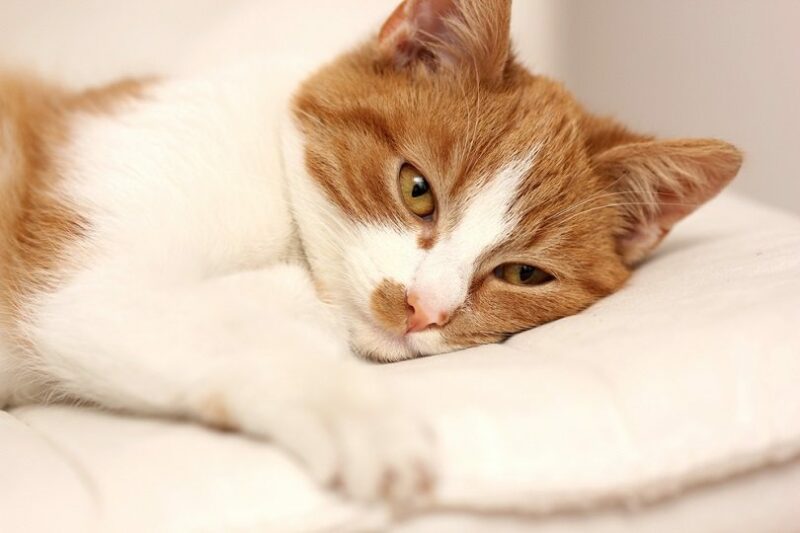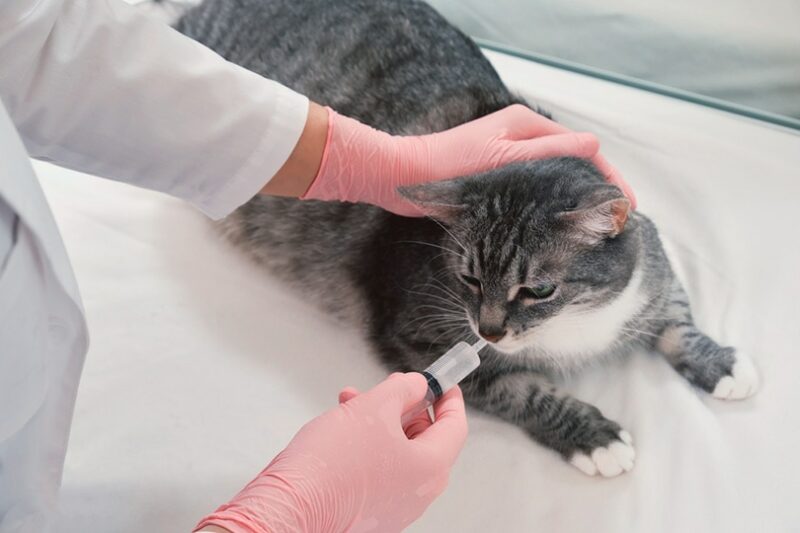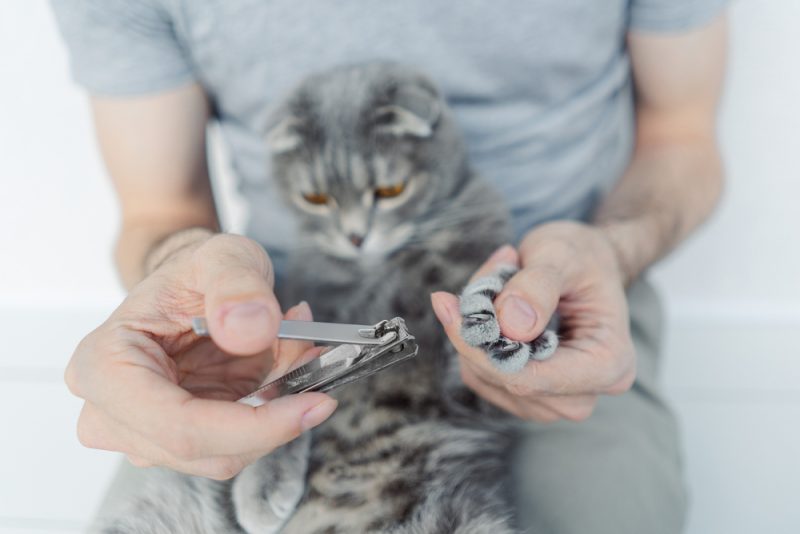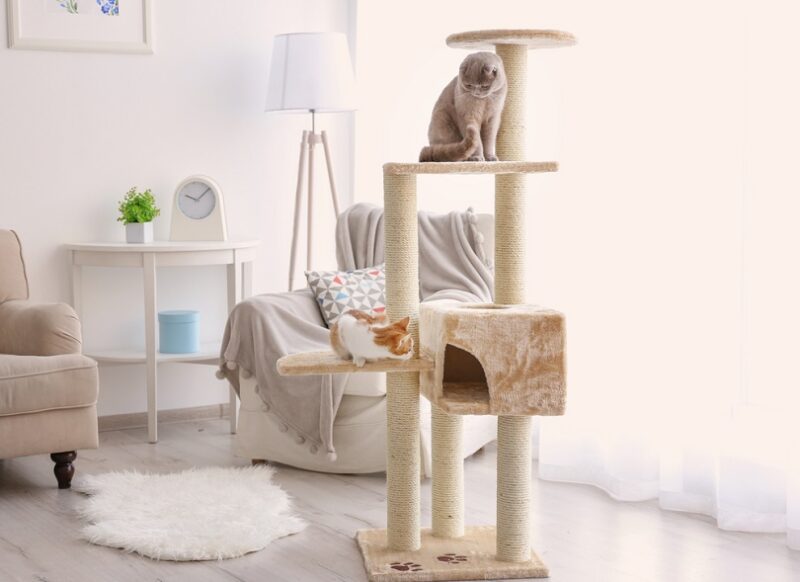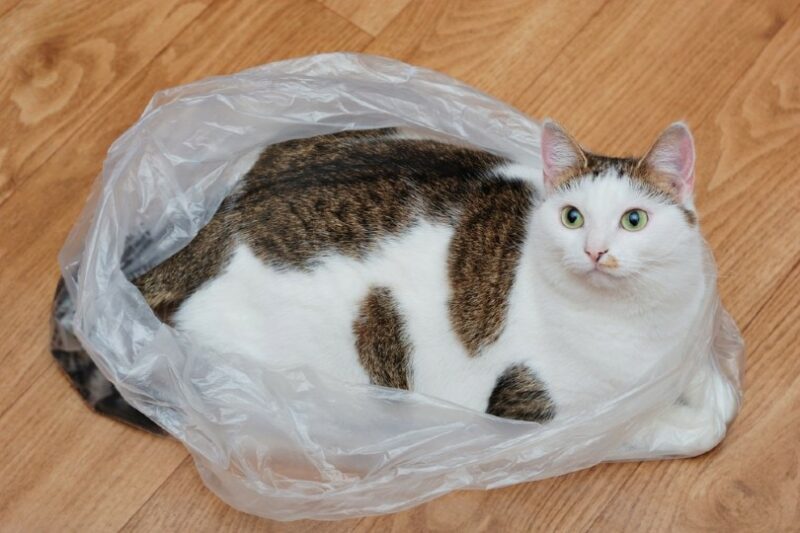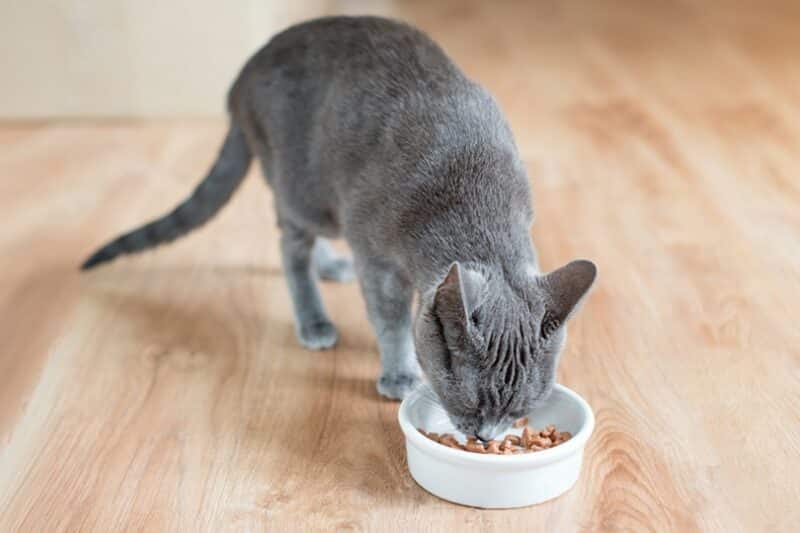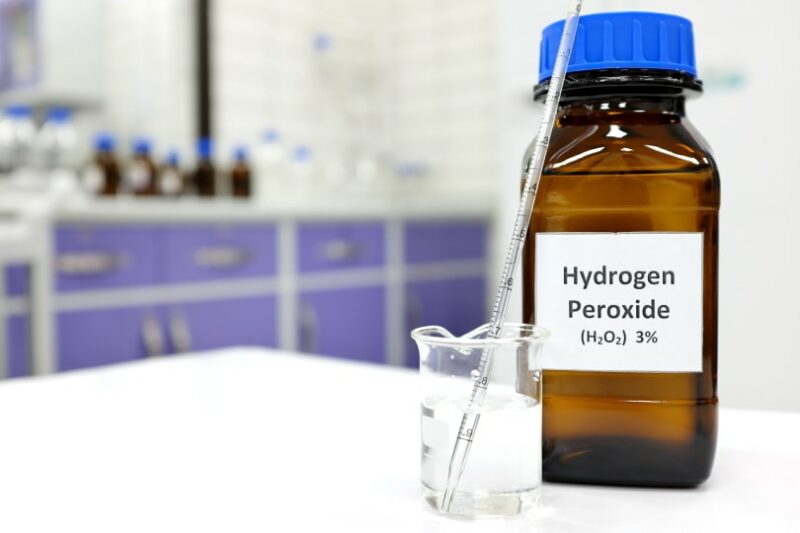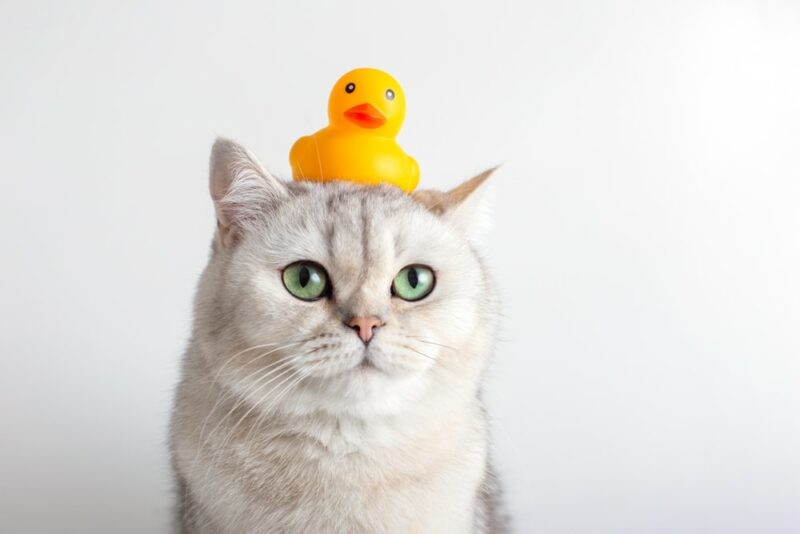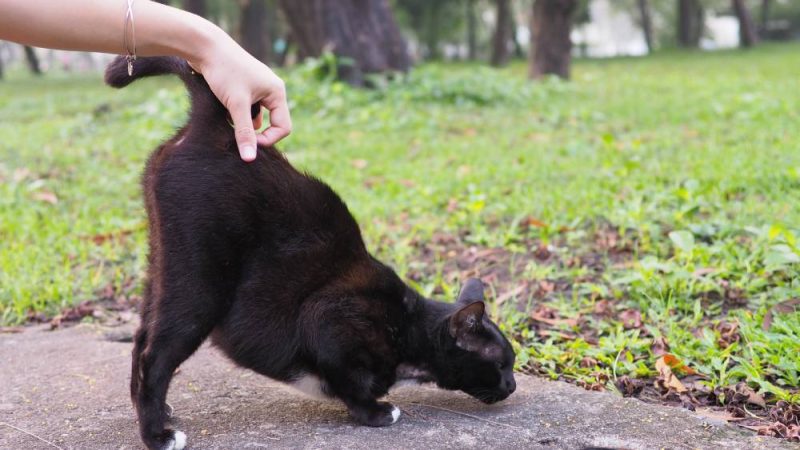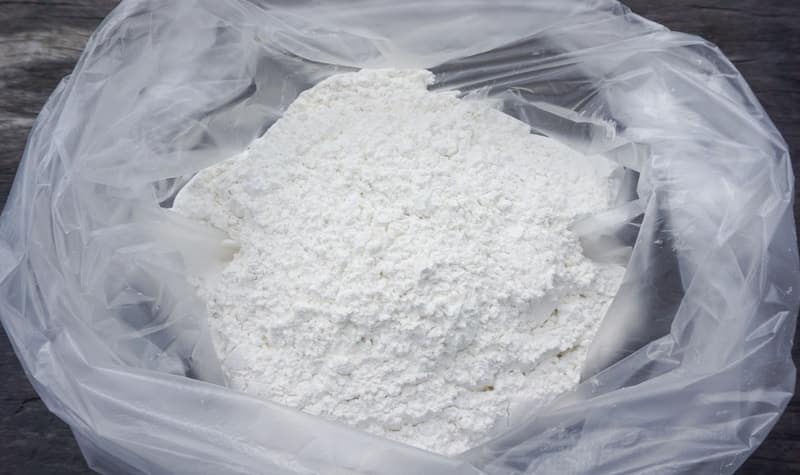In this article
View 6 More +Thiamine deficiency, or vitamin B1 deficiency, is a clinical syndrome associated with vascular lesions and nerve damage caused by an insufficient concentration of this vitamin in a cat’s body. This deficit is due to insufficient intake of vitamin B1 (part of the B complex group) to the body’s requirements.
It’s predominant in cats that consume large amounts of raw fish because these contain a compound that destroys vitamin B1. Thiamine deficiency can also occur in cats that consume unsupplemented commercial food, cooked food, or certain raw meats. Additionally, gastrointestinal and liver diseases can lead to thiamine deficiency.
Vitamin B1 deficiency is quite rare in cats but can be life-threatening if the clinical signs are not recognized by their owners in time. For this reason, you should know the clinical signs of thiamine deficiencies if your cat has a poor diet or eats large amounts of raw fish.

What Is Thiamine Deficiency in Cats?
Thiamine, or vitamin B1, is a water-soluble vitamin (i.e., it dissolves in water) that is part of the B complex. It’s essential for your cat’s body and has the following roles:
- Plays a key role in the metabolism of carbohydrates
- The production of certain nucleotides, which are the building blocks of RNA & DNA
- Production of other coenzymes necessary for normal metabolism
- It plays an essential role in maintaining a healthy nervous system
Thiamine may also have other functions that are not currently known, as it’s widely involved in a plethora of normal metabolic processes all around your pet’s body, in just about every body system. Cats cannot synthesize thiamine, so their diet must contain this vitamin. When the food that they consume is low in vitamin B1, thiamine deficiency occurs.
What Are the Causes of Thiamine Deficiency in Cats?
There are several mechanisms for a thiamine deficiency.
- The cat’s diet has specific enzymes that can break down thiamine (a risk associated with raw seafood).
- The commercial food is not supplemented with enough thiamine to meet your cat’s needs.
- Cats that are fed dog food can develop a deficiency, as they require up to four times more thiamine than dogs do.
- Cats fed a species-inappropriate diet (such as a vegetarian or vegan diet) may develop deficiencies due to the consumption of inappropriate foods.
- Cats fed preserved meats might develop thiamine deficiency, due to some preservatives (such as sulfur dioxide) being able to destroy thiamine.
- Poor absorption of thiamine due to underlying health issues or pathologies (particularly those involving the liver).
- Excessive loss of thiamine due to kidney issues or due to the consumption of diuretics.

The 14 Signs to Look For in Thiamine Deficiency
Generally speaking, thiamine deficiency has three phases or stages: an induction stage, a critical stage, and a terminal stage. The signs during each stage as are follows:
The Induction Stage
The induction stage often occurs when a cat’s diet has been deficient in thiamine for a period of around 2 weeks.
- Reduction in food intake (hyporexia)
- Refusal to eat (anorexia)
- Vomiting
- Lethargy
- Weight loss might be noticed
If your cat doesn’t receive veterinary care during the induction stage, they will proceed to the critical stage.
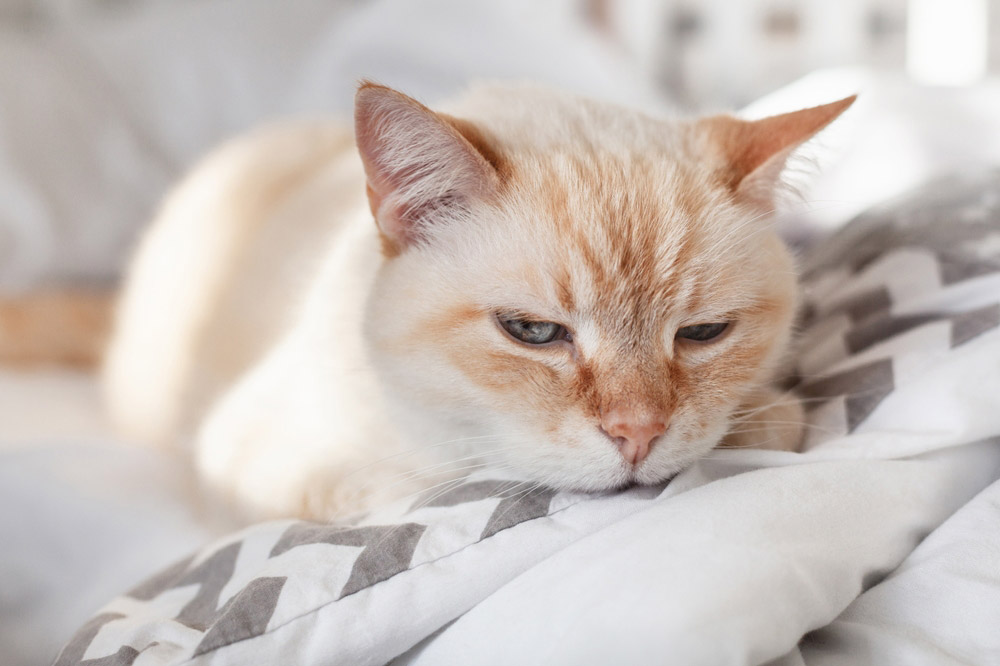
The Critical Stage
The critical stage occurs if the induction stage is ignored and your cat continues to deteriorate.
- Bending the neck in a downward position (cervical ventroflexion)
- Dilated, fixed pupils
- Muscle weakness
- Tremors
- Ataxia (unsteady gait/wobbly walk)
- Paralysis of the eye muscles
- Seizures (in extreme cases)
Neurological signs generally have a rapid onset and precede vomiting. In some cases, tetraparesis with developed rigidity may also occur. This stage will eventually progress to the terminal stage.
The Terminal Stage
The terminal stage usually occurs if your cat has a thiamine deficiency for around a month or so, with no intervention or treatment.
- Severe deficiencies of the signs associated with the critical stage
- Eventual collapse and death
The terminal stage is considered fatal within just a few days. Most cats will perish unless veterinary treatment begins immediately.

Thiamine Deficiency Diagnosis
The presumptive diagnosis is usually based on clinical signs and history. The most common way a diagnosis is usually made by vets is by assessing the response that deficient cats have when supplementing their diet with thiamine.
Other tests include a biochemical blood profile, a complete blood count, and urine analysis; however, these tests are usually somewhat inconclusive. A set of chest and abdominal X-rays can also be recommended, as it is part of the investigation (especially when vets want to rule out other health conditions with similar signs). In rare instances, an MRI might also be warranted.
If you are concerned or have questions about your cat’s health, you can also speak to a vet from the comfort of your own home to help make a plan. They can determine when an in-clinic vet visit should be made.
If you need to speak with a vet but can't get to one, head over to PangoVet. It's an online service where you can talk to a vet online and get the advice you need for your pet — all at an affordable price!

Thiamine Deficiency Treatment
- Supplementing your cat with thiamine – This can be done either orally (with assisted feeding) or via injections, depending on the severity of your cat’s condition.
- Assessing the underlying cause of the thiamine deficiency – A veterinarian may opt for a long-term dietary change for your cat and may make adjustments to your pet’s diet, such as limiting or suspending your cat’s raw fish diet.
Depending on your cat’s condition, they may be hospitalized for a period of time until they are stabilized and on the road to recovery. A veterinarian may opt for a feeding tube for your cat for a period of time and also prescribe them a critical care or liquid diet for a period of time.
If your cat’s deficiency was caused by issues such as those involving the liver or kidneys, the veterinarian would prescribe additional medications and therapies to address those ailments.
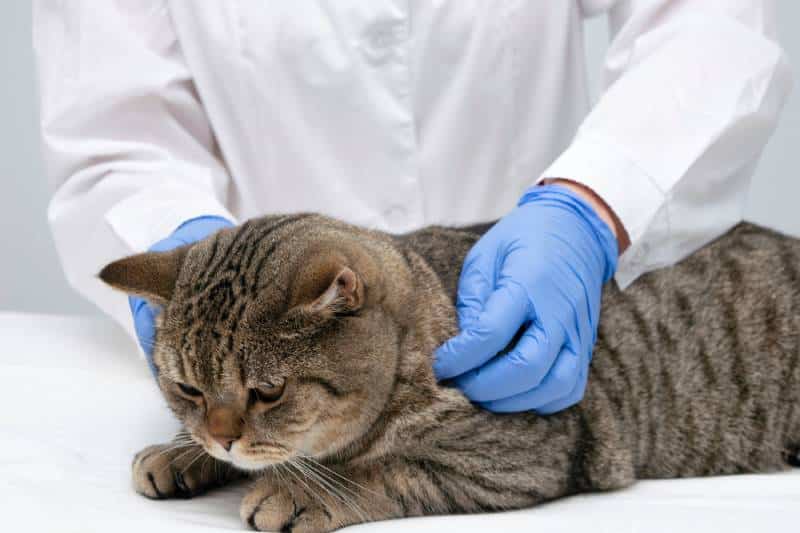
Thiamine Deficiency Prognosis
The prognosis of your cat, or the odds of their recovery, depend on the severity of their deficiency at the time of presentation to the veterinarian. Cats in the induction or critical phase generally have a more favorable prognosis when compared to cats that are presented in the terminal stage of the condition.

Conclusion
Thiamine deficiency can be life-threatening for cats if it is not diagnosed and treated in time. The causes of this deficiency are various underlying ailments or nutritional insufficiencies that lead to a low thiamine intake. Common clinical signs include lack of appetite, vomiting, and nervous signs, such as twitching, incoordination, and dilated pupils. If you suspect that your cat has a thiamine deficiency, you should promptly contact a veterinarian, as an earlier diagnosis offers a better chance of recovery.
Featured Image Credit: Natata, Shutterstock
